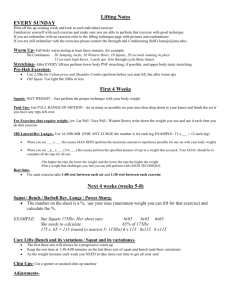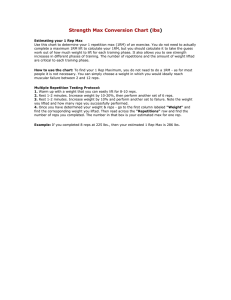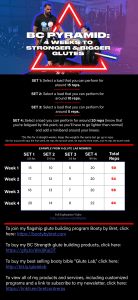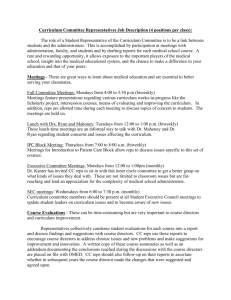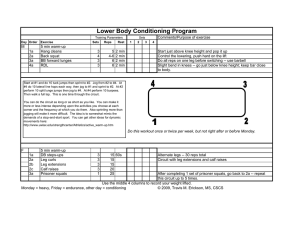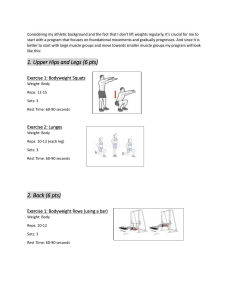Systems of Training
advertisement
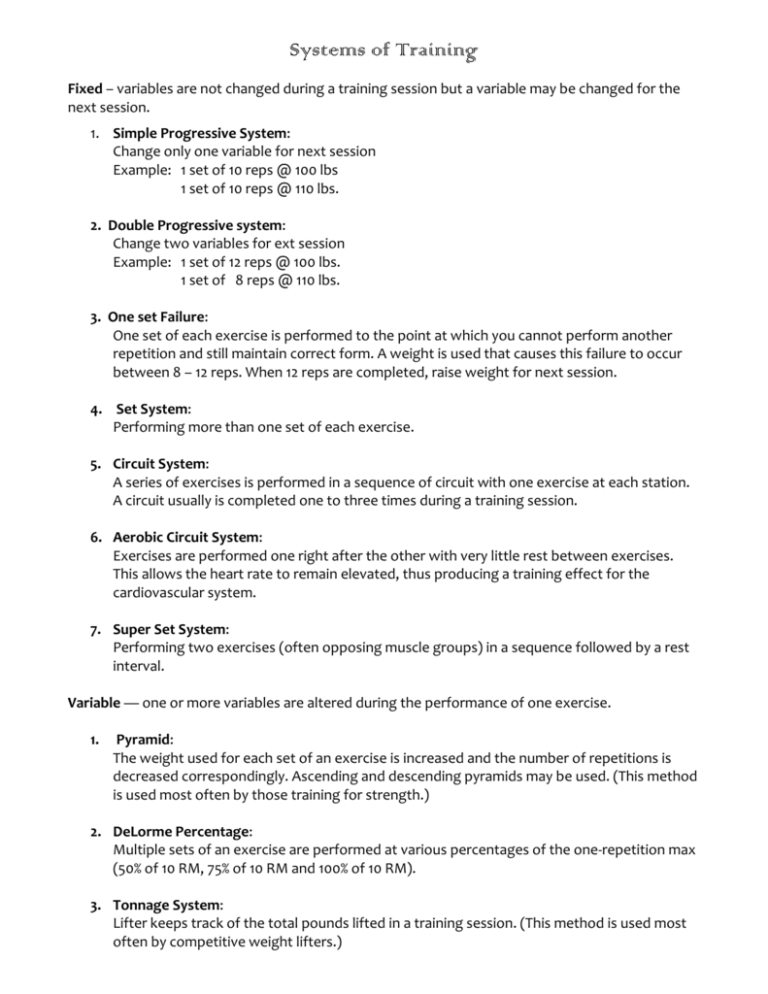
Systems of Training Fixed – variables are not changed during a training session but a variable may be changed for the next session. 1. Simple Progressive System: Change only one variable for next session Example: 1 set of 10 reps @ 100 lbs 1 set of 10 reps @ 110 lbs. 2. Double Progressive system: Change two variables for ext session Example: 1 set of 12 reps @ 100 lbs. 1 set of 8 reps @ 110 lbs. 3. One set Failure: One set of each exercise is performed to the point at which you cannot perform another repetition and still maintain correct form. A weight is used that causes this failure to occur between 8 – 12 reps. When 12 reps are completed, raise weight for next session. 4. Set System: Performing more than one set of each exercise. 5. Circuit System: A series of exercises is performed in a sequence of circuit with one exercise at each station. A circuit usually is completed one to three times during a training session. 6. Aerobic Circuit System: Exercises are performed one right after the other with very little rest between exercises. This allows the heart rate to remain elevated, thus producing a training effect for the cardiovascular system. 7. Super Set System: Performing two exercises (often opposing muscle groups) in a sequence followed by a rest interval. Variable — one or more variables are altered during the performance of one exercise. 1. Pyramid: The weight used for each set of an exercise is increased and the number of repetitions is decreased correspondingly. Ascending and descending pyramids may be used. (This method is used most often by those training for strength.) 2. DeLorme Percentage: Multiple sets of an exercise are performed at various percentages of the one-repetition max (50% of 10 RM, 75% of 10 RM and 100% of 10 RM). 3. Tonnage System: Lifter keeps track of the total pounds lifted in a training session. (This method is used most often by competitive weight lifters.)

